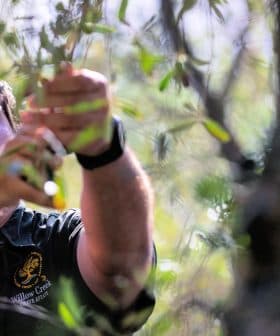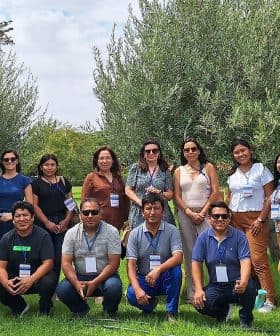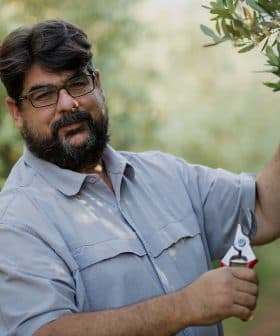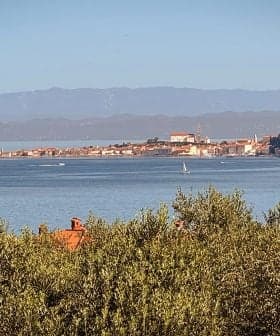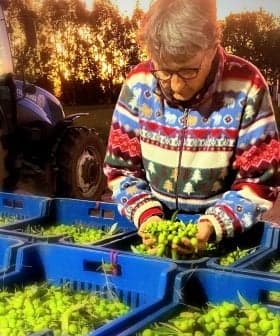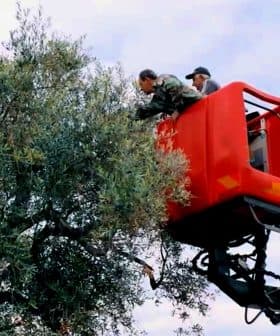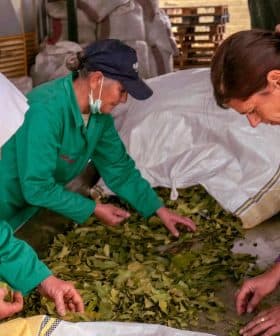Production Rebounds in France Amid Climatic Challenges
Frost, hail and torrential rains dampened the 2020 olive harvest in France. It will still be better than last year and producers report that quality is as good as ever.
 Photo: Louisa Sherman
Photo: Louisa ShermanAfter a disastrous 2019/20 crop year, olive oil production in France is expected to rebound in the current year, with estimates ranging from 3,500 tons to 5,200 tons. The rebound comes after challenging weather conditions and the impact of the Covid-19 pandemic, with some producers facing difficulties due to frost, storms, and the prospect of a ‘no deal’ Brexit affecting exports to the U.K.
After a catastrophic end to the 2019/20 crop year, in which the expected harvest fell from 5,900 tons to just over 3,250 tons, olive oil production in France looks set to rebound.
According to the latest figures from the International Olive Council (IOC), France will produce 5,200 tons in the current crop year. While this yield is slightly above the rolling five-year average, it shows French production trending downwards.
We have the lowest ever result in the seven years that we have been farming this property and it amounts to a third of our best harvest level ever. But, nature is kind and we have an excellent quality oil with fine aromas.
Other estimates are a bit more conservative, with author and Olio Nuovo Days co-founder Emmanuelle Dechelette forecasting a production of 3,500 tons in an article written for Juan Vilar Strategic Consultants. France Olive, the country’s official olive oil producers association, has yet to publish its own production figures.
The production rebound comes after another challenging year, in which bad weather in the spring and summer once again damaged olive trees across the south of the country.
Producers see the increasingly unpredictable and erratic weather afflicting the south of France as one of the main challenges going forward.
The Covid-19 pandemic also caused inconveniences, both in terms of the logistics of the harvest as well as slowing sales to restaurants and the hospitality sector. While the harvest itself was not impacted by national quarantines, the ability to repair and replace equipment during the spring was.
“This is indeed what it is [another challenging year of erratic weather], especially for the earlier-harvesting French areas and varieties that were hit by frost in the spring, which is a rather rare occurrence,” said Henri Derepas, of Champsoleil, which is located in the hills near the southeastern city of Nice.
See Also:2020 Harvest Updates“Paradoxically, our Alpes-Maritimes department is doing well with good overall productivity this year, while further west, the year promises to be very weak,” he told Olive Oil Times. “This is partly due to the fact that our variety is later and that, for us, the 2019/20 season had been historically catastrophic.”
Overall, Derepas expects to harvest about 35 tons of olives on his five-acre organic estate, of which around 12 tons will be used for table olives and the remaining 23 tons will be transformed into extra virgin olive oil.

Photo: Henri Derepas
This year’s harvest represents a significant improvement in terms of both quantity and quality for Derepas, whose 2019 harvest was damaged by a scorching June. The unseasonably hot weather during a crucial stage of flowering damaged many of the fruits and led to a premature fruit drop on many of his trees.
“Quality is also one of the characteristics of this season and is due to a combination of positive factors: reasonable spring rains at the right time, a dry summer without excessive temperature, low pressure from the fruit fly and the absence of the Dalmaticosis fungus,” he said.
“The oils produced to date are very harmonious and comply with the typicality of our Huile d’olive de Nice PDO,” Derepas added.
However, the producer pointed out that not everyone had been as fortunate. Just a few valleys over from where Derepas’ groves are cultivated, Storm Alex wreaked havoc back in October.
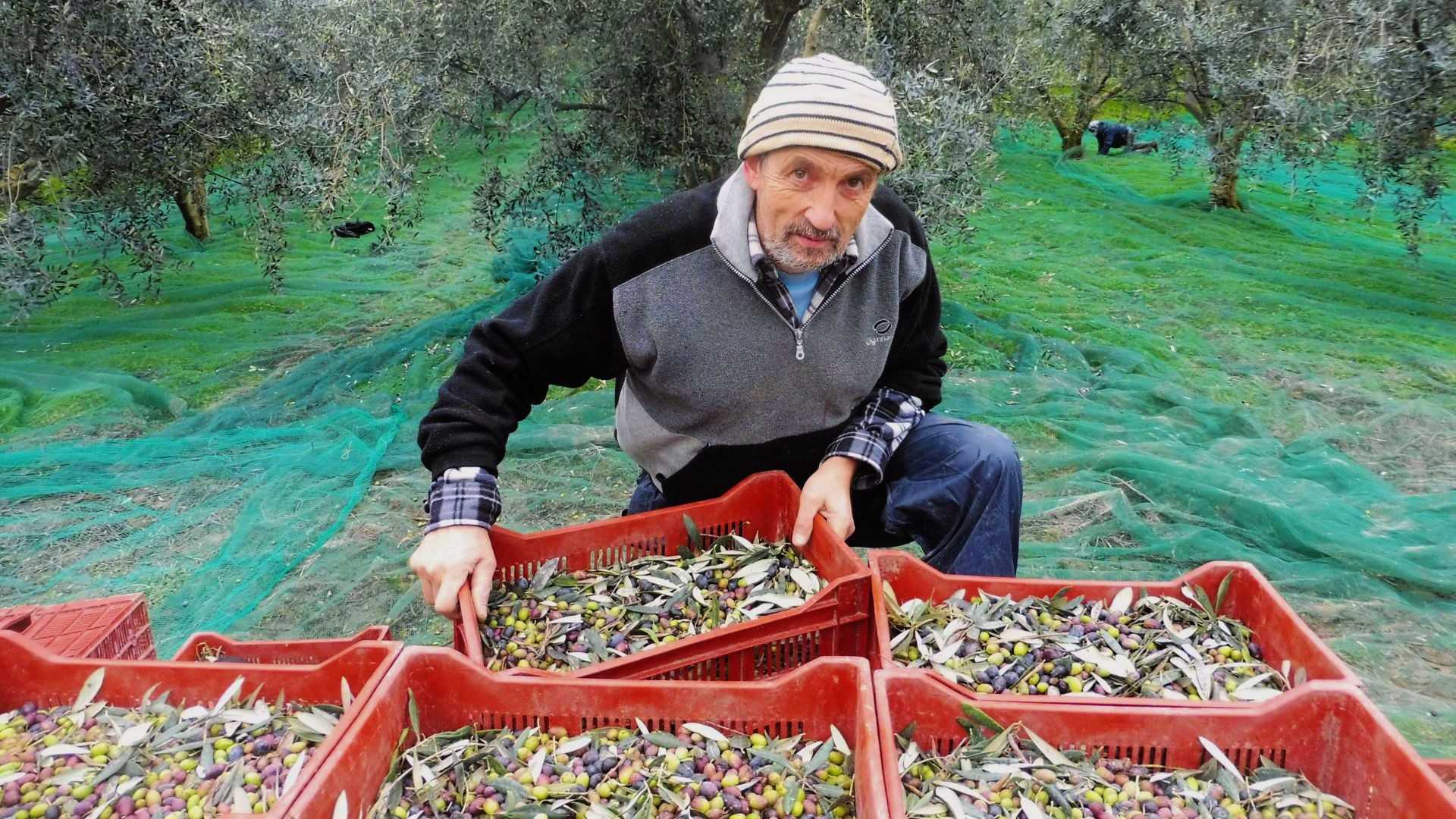
Henri Derepas
In about 24 hours on October 2, 450 millimeters of rain fell on northern Italy and southern France, washing away roads, buildings, electrical and telephone lines as well as plenty of crops.
“From an agricultural point of view, it is the vegetable farms located at the bottom of the valley and the farms that have suffered,” Derepas said. “The family olive groves – mainly in the Roya Valley – suffered less because they are located on hillsides.”
“On the other hand, due to lack of road network, many are no longer accessible,” he added. “The gusts of wind caused premature falls of healthy olives – up to one-third of the production on the most exposed plots.”
The harvest in these areas was also impacted by the inability of workers to arrive in the groves to harvest as well as connectivity problems between the groves and mills.
“A week later, various hail storms in the Paillon valleys (further south) and the hinterland of Grasse (further west) caused further damage to the fruits on the eve of harvest,” Derepas said.
About 200 kilometers to the west of where Derepas harvests his olives, Louisa Sherman, the co-owner of Domaine de Gerbaud, said she was expecting a small harvest but a high-quality yield this year.

Photo: Louisa Sherman
“It has been a disaster for some farmers in France,” she told Olive Oil Times. “A spell of frost and undesirable rains on the olive tree flowers during the fruit-forming phase was the cause of olives not forming.”
“We have the lowest ever result in the seven years that we have been farming this property and it amounts to a third of our best harvest level ever,” she added. “But, nature is kind and we have an excellent quality oil with fine aromas.”
Sherman’s agricultural specialist, François Aurouze, added that he has observed a 70 percent smaller harvest in the regions of Var and Alpilles, near Marseilles, and an average loss of 50 percent among producers in Luberon, farther west and where Domaine de Gerbaud is located.
“I think that two causes are at the origin of this small harvest: the frost of March 27 and 28, 2020 and a few days of rain at the time of flowering,” he said.
See Also:The Best Olive Oils From FranceHowever, there is another impending storm that is worrying Sherman this year: the prospect of a ‘no deal’ Brexit. After voting to leave the European Union in 2016, the deadline for the United Kingdom and the E.U. to reach a deal is rapidly approaching.
Overall, Brexit is unlikely to have a profound impact on the French olive oil production sector, as the vast majority of French production is consumed domestically. It will, however, complicate Sherman’s operation, who lives part-time in the U.K. and exports olive oil there.
“If Brexit negotiations fail, we face tariffs of around £1.05 ($1.40) per liter,” she said. “This could be critical for us as French olive oil is dearer than most due to high wages in France. Premium French extra virgin olive oil could be further marginalized compared to Italian, Greek and Spanish olive oils [in the U.K.] due to increased prices.”
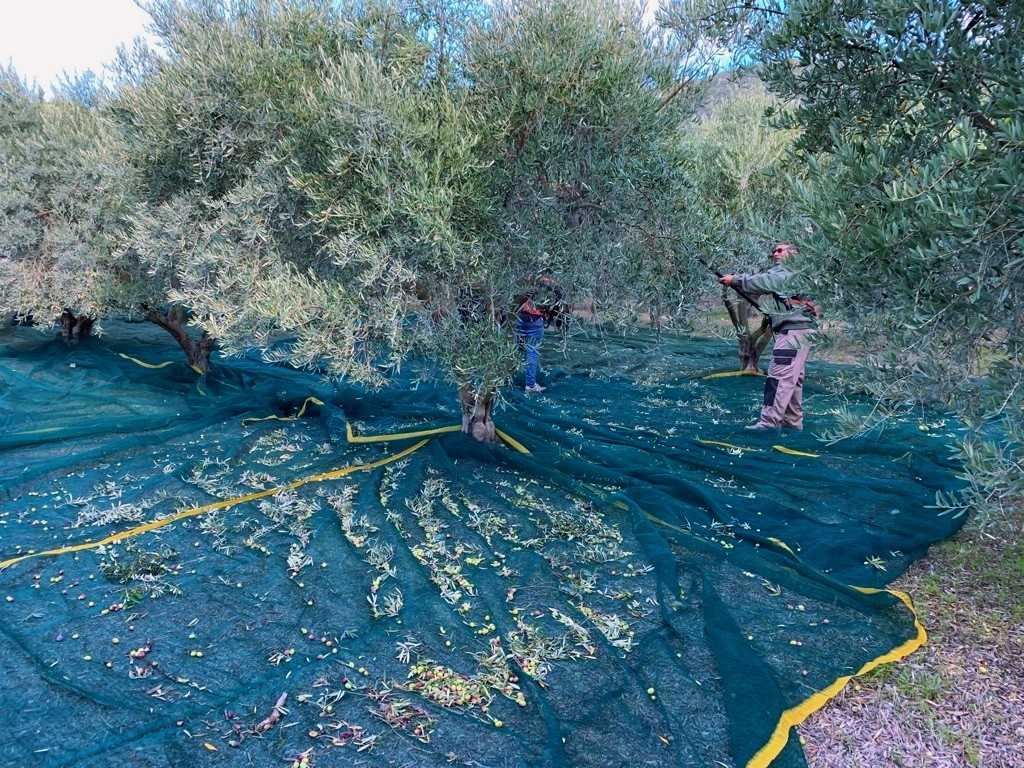
Away from the imposition of tariffs on goods traveling across the English Channel, the logistics of farming in France without E.U. citizenship are also causing headaches for Sherman.
“Travel and travel limitations pose real problems for us,” she said. “Unless you apply for a visa, there is a limited amount of time you can be in the E.U. every six months.”
“For farming purposes, one must be on site for certain periods to monitor, supervise and just get down to some hard work,” Sherman added. “I will certainly inquire about special dispensation to non-resident farmers when the time comes.”
The U.K. is set to leave the E.U., de facto, on January 1. (It technically left on December 31, 2019, but entered a year-long transition period in which nothing changed).
While there is some hope a deal can be reached before then, Sherman along with many other agricultural producers will be waiting to see what exactly the future trading and travel relations between the two sides will be.


